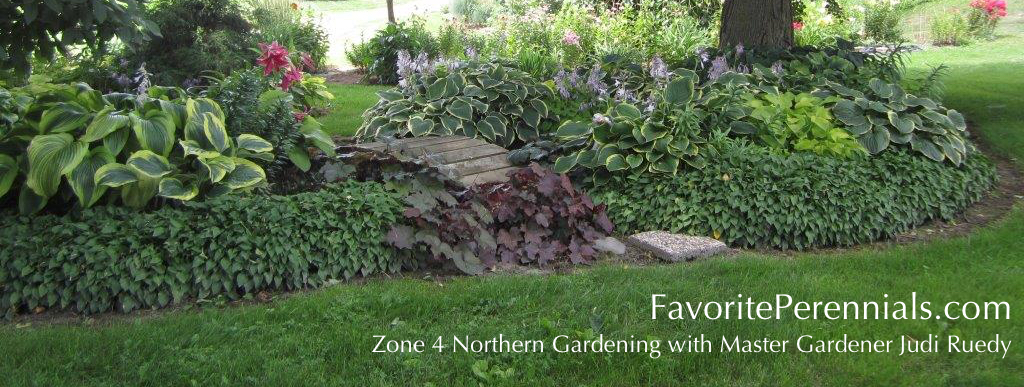Rejuvenate Your Perennial Beds
Find ways to rejuvenate your perennial beds. Fall is a good time to dig, divide, and re-work your Hostas and perennial beds so they look great next spring. It is also a good time to think about redesigning your flower beds.
Are your perennial beds too crowded? Are they overgrown? Weeds everywhere? Perennials just seem to keep multiplying and that is what we want them to do. However, sometimes, especially after 4 or 5 years they are really getting to the overgrown stage. Or, they have self seeded and really take over the areas they weren’t meant to be in.
Rejuvenate Your Perennial Beds
Evaluate what worked and what didn’t work
Fall is a great time to get out in the garden and do some rejuvenating of your perennial beds and take a look at the plants and how they performed this past year. Now is when you remember what they performed like this past summer.
Even if you only do one bed or one area at a time, some plants just need to go and should be replaced with a variety that look better and does better in that space. Or, taken out all together to make more room for the other plants in that bed.
I see many overgrown perennial beds (mine included) and it is hard to enjoy any one plant if it is competing for attention from 3 or 4 others and getting lost in the overgrown mess.
Cut Down Foliage
One thing you can do to remedy this is to cut down foliage of plants such as daylilies that are already done blooming and by mid-September usually don’t look that good and the dried leaves need to be trimmed back anyway.
Trim Dead Leaves
Then there will be more room for the later fall varieties to shine. Some varieties of Hosta too, shut down early and the leaves dry up and then the leaves can be trimmed off any time after that.
Divide Plants
Daylilies and other perennials can be divided at the same time, by just cutting an outer chunk or two off the main plant and plopping it into another bed or into another area to overwinter it for proper placement next year.
You can take a shovel and dig one edge of the daylily clump and loosen it up and then using an old butcher knife or a hand trimming saw, cut through the roots and lift only that part out, thus not disturbing all of the roots. Then fill the hole back in with new soil and put the chunk you cut out in another area.
Move Plants that don’t do well to another Area
If you are removing a whole plant that just doesn’t do well in that spot, you should fill the hole in with new soil.
Black Eyed Susan’s and Purple Coneflower are just wonderful plants and make good food for the birds in the winter, but they can become very overgrown and thick and maybe the seed heads need to be cut off early for a year or two to keep the area looking more tidy.
Sedums of all types can be dug and divided in the early fall. Because of all the rain we have had this year, mine grew so much taller than usual and have all flopped from the middle and definitely need to be dug and re-planted in different areas.
I also have a grass called “Little Blue Stem” and it has wonderful colors this time of the year, however I can’t see them because half the stalks are laying on the ground. We had about 4 inches of rain and wind a few weeks ago and that made a mess of this grass this year. It is planted in a sunny western exposure spot, but it is heavy clay soil in that area and it doesn’t like that. I will move that in the spring to a a better spot and add some sand to the soil when I plant it.
Find new homes for your Extras
Many of my extra are a welcome site at the perennial sale we have each year for Bangor Garden Club, May 6 & 7th next year. Check back, I will have more things to say about the plant sale as spring is near!

